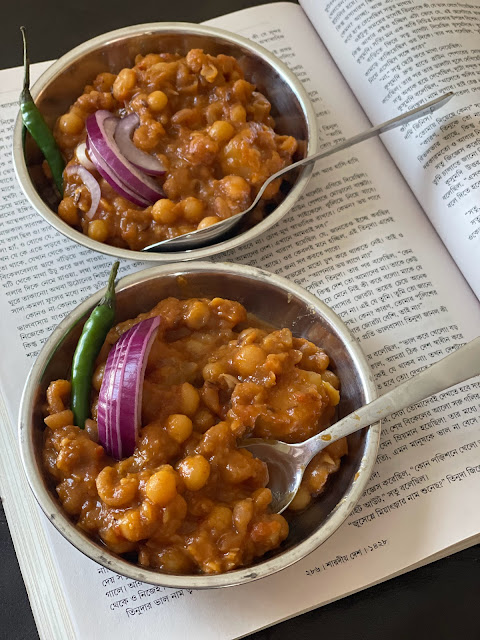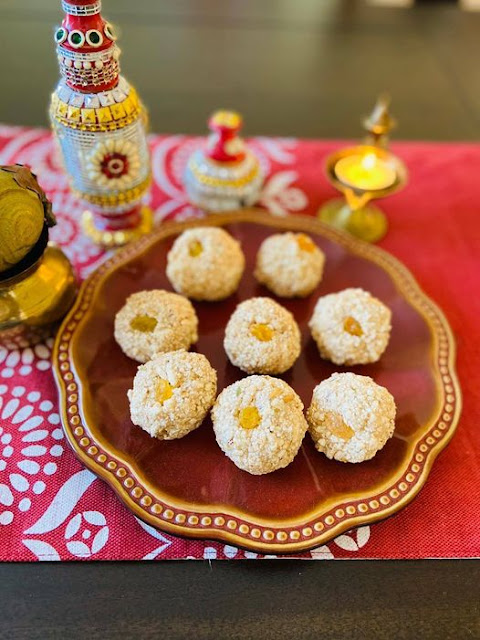Bengali Ghugni | Instant Pot (IP) Ghugni Recipe
Ghugni or Ghoognee is a very very popular snack in Bengal and in parts of Bihar and Orissa. It is made with dried white peas and cooked with myriad spices including Bhaja Masla. While the Northern India has its Chhole, Bengal has its Ghugni. An authentic Ghugni is made only with Motor or White Peas(sold as White or Yellow Vatana in Indian grocery stores), not chickpeas. Garnished with onion, green chilies, and the very Bengali addition of coconut, it is a mouthwatering snack.My original recipe of Ghugni was posted several year ago following Somnath's directions. I have made Ghugni in Instant Pot using the same recipe. The Instant Pot version is easier and little quicker.
Two amazing things happened this weekend!
1. My IP did not scream Burn on me. It did not give up on me. I successfully made Ghugni in my IP. This has been my life long dream. To make Ghugni in IP as my Pressure cooker is not large enough for a week's worth of Ghugni. Small victories in a big gadget filled world.
2. I went to my first every stand-up comedy show. Given that I have a special fondness for all things funny and eagerly watch the stand-up comedy shows on Netflix , it is surprising that I had never been to a live one. So when we heard Vir Das is in town, a bunch of us eagerly got our tickets for his show. And it was truly an amazing experience.
I have loved his shows on Netflix but being right there in the audience, just 6 rows away from the stage, in a theater throbbing with energy and laughter was something else! HILARIOUS.








